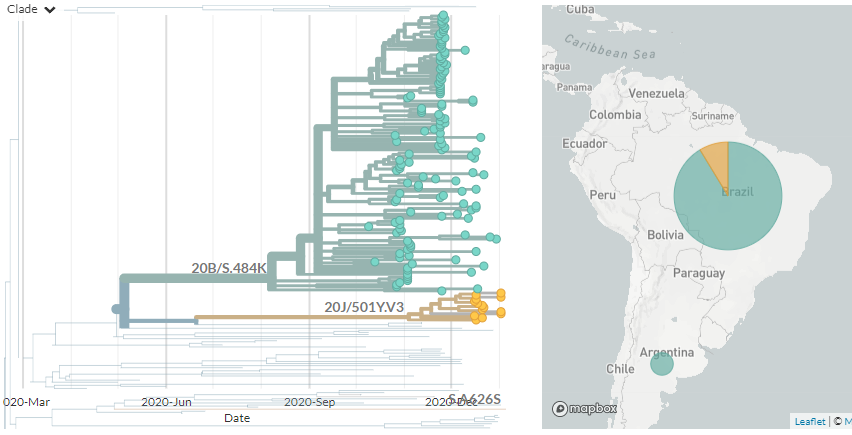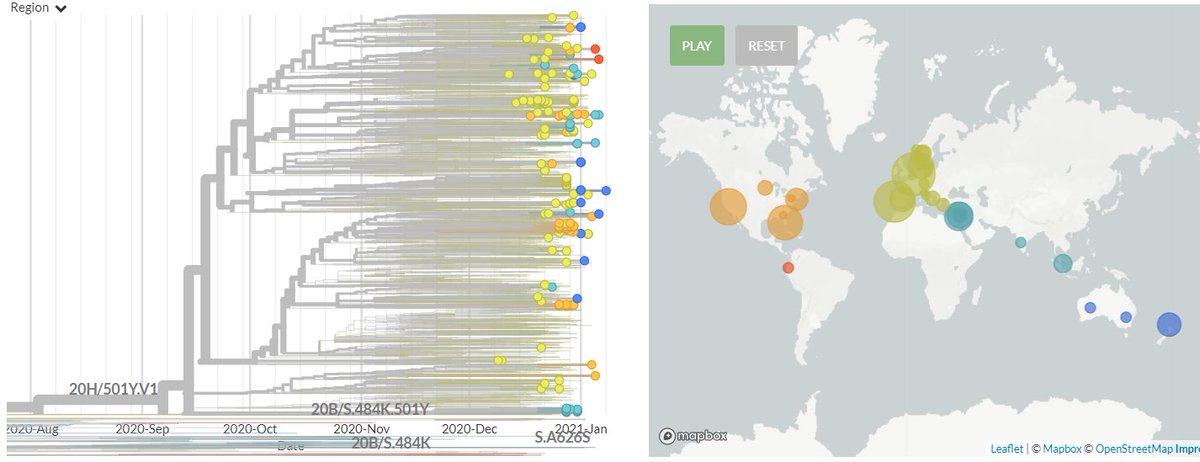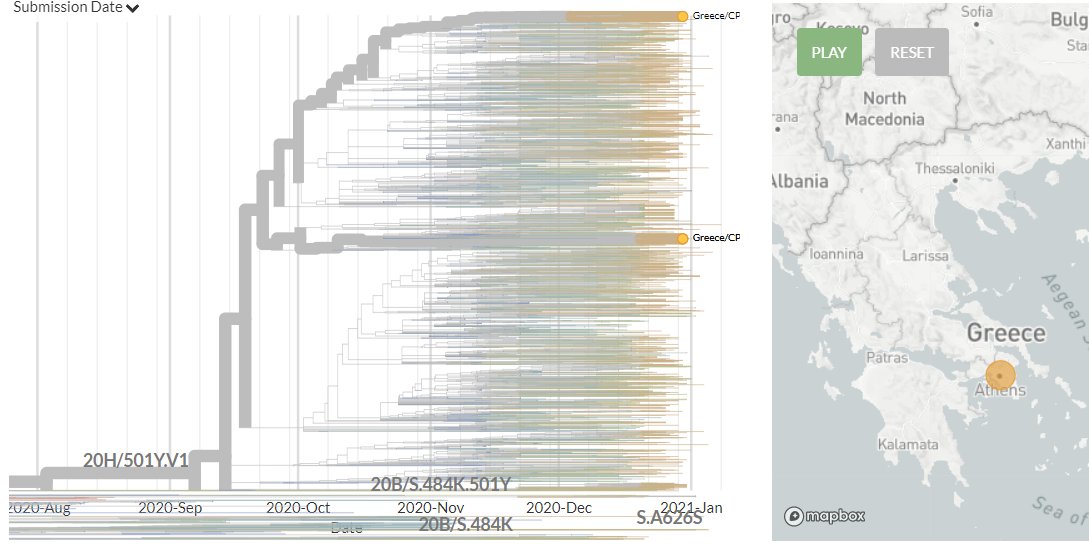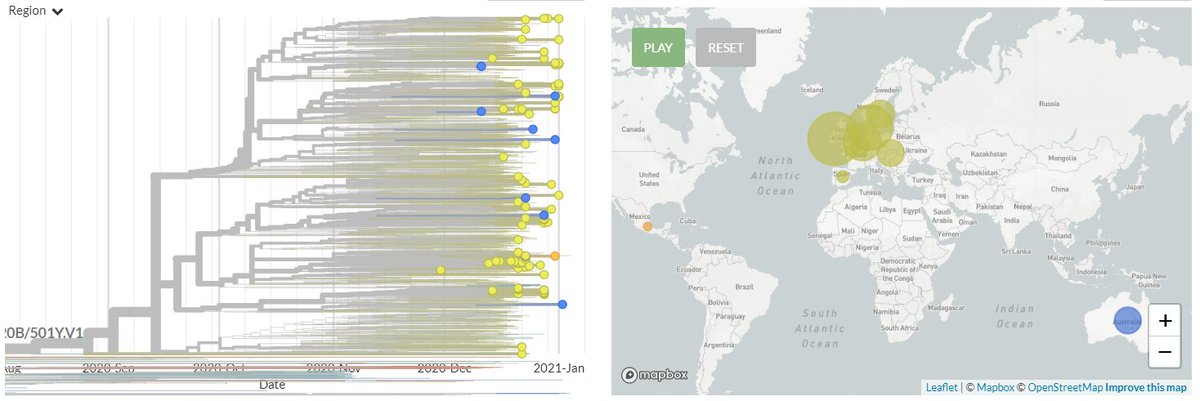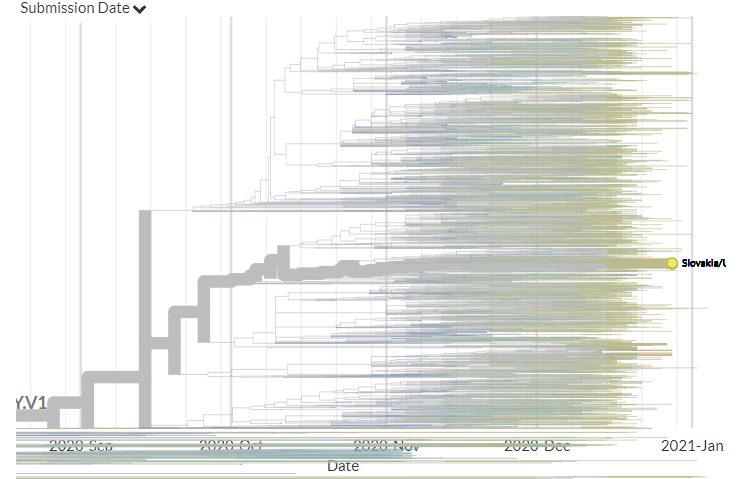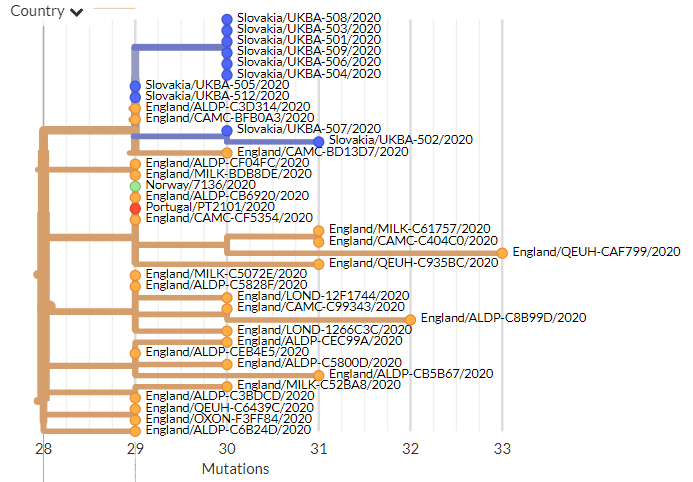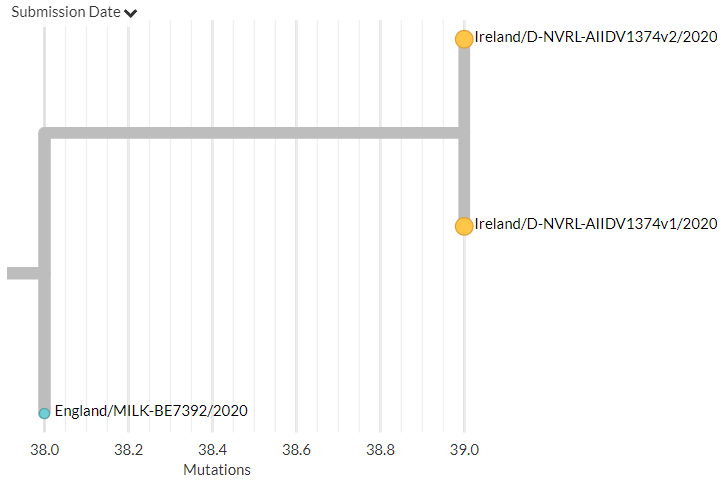
Lots of tweets about this today!
Let's see what we can see in the focal S:E484 build!
Phylogenetics (what I do - making 'family trees' from virus genetics) can be very informative to see how different variants are spreading, and how cases link🙂
1/10
independent.co.uk/news/health/br…
Let's see what we can see in the focal S:E484 build!
Phylogenetics (what I do - making 'family trees' from virus genetics) can be very informative to see how different variants are spreading, and how cases link🙂
1/10
independent.co.uk/news/health/br…
There are two variants circulating predominantly in Brazil:
- 20B/S.484K seems to be older & more widespread. It has (among others) a mutation at position 484
- 20J/501Y.V3 is smaller & detected recently. It has mutations at 501 *and* 484.
2/10
nextstrain.org/groups/neherla…
- 20B/S.484K seems to be older & more widespread. It has (among others) a mutation at position 484
- 20J/501Y.V3 is smaller & detected recently. It has mutations at 501 *and* 484.
2/10
nextstrain.org/groups/neherla…
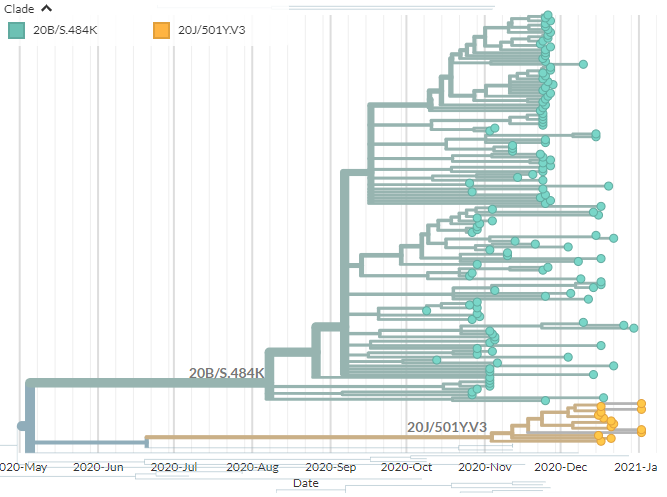
The variant predominantly in the UK (501Y.V1 / B.1.1.7) and the variant predominantly in South Africa (501Y.V2) also both have 501. 501Y.V2 *also* has the 484K mutation.
Why are there concerns about these mutations? You can read more at CoVariants.org!
3/10

Why are there concerns about these mutations? You can read more at CoVariants.org!
3/10

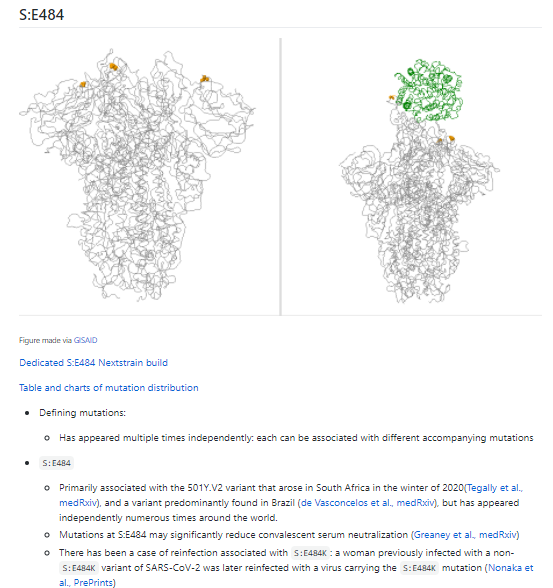
The view below is from an analysis focusing on sequences with a mutation at 484. It shows all the samples in the 2 variants (20B/S.484K & 20J/501Y.V3) & how they're related. More closely related = closer together (very, very roughly).
4/10
4/10
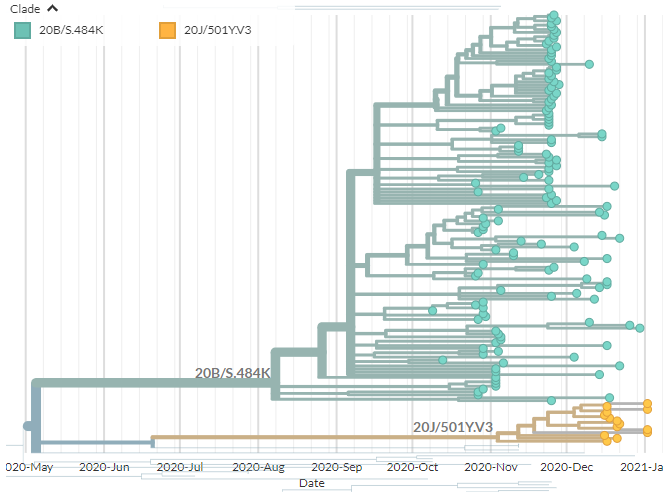
We can colour these samples by region to see where they're from. As we expect - most are in Brazil! A few are in Argentina (also red).
5/10
nextstrain.org/groups/neherla…
5/10
nextstrain.org/groups/neherla…
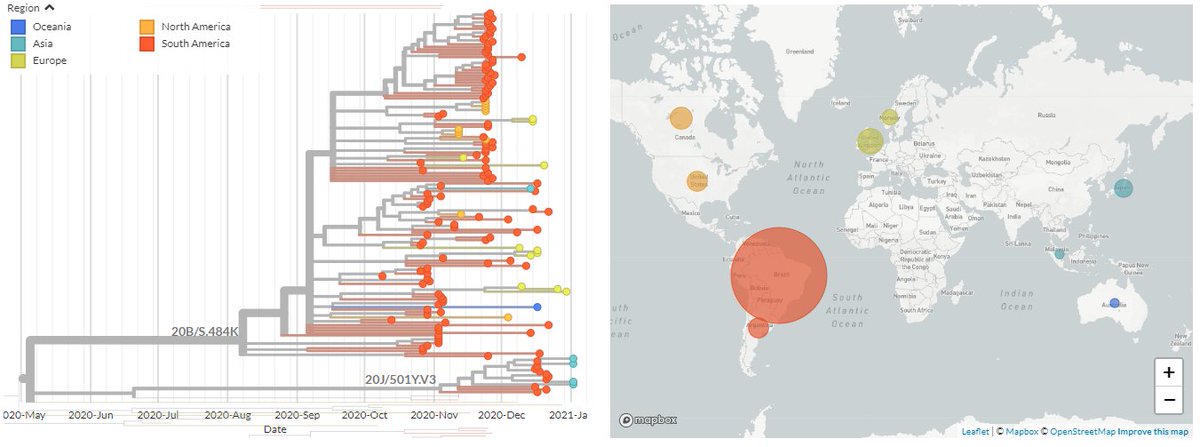
If we look just at 20B/S.484K (top cluster), we can see there are clusters of sequences in the UK, Canada & the USA, and exports to Norway, Malaysia, & Australia.
6/10
nextstrain.org/groups/neherla…
6/10
nextstrain.org/groups/neherla…

Importantly, the clusters in the USA & Canada are identical (though each country also has an additional imports), so they may be from a group of travellers returning, rather than local transmission (left pic). They also date from Nov - so not recent (right pic).
7/10

7/10
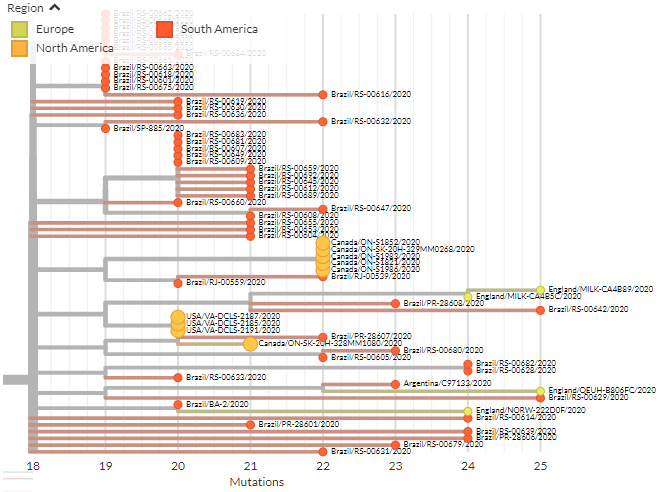
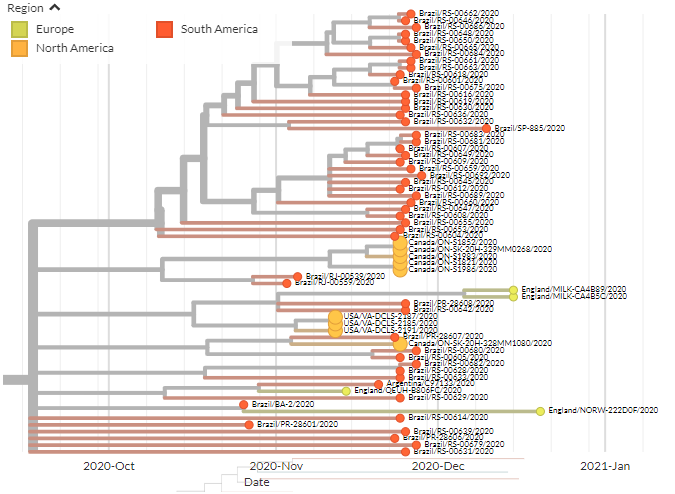
We can see 8 UK sequences in the 20B/S.484K cluster. There are 2 clusters, but neither are identical. They could be from a common exposure (same part of Brazil, same travel group), or possibly be local transmission. These samples are from Nov & Dec.
8/10
nextstrain.org/groups/neherla…


8/10
nextstrain.org/groups/neherla…
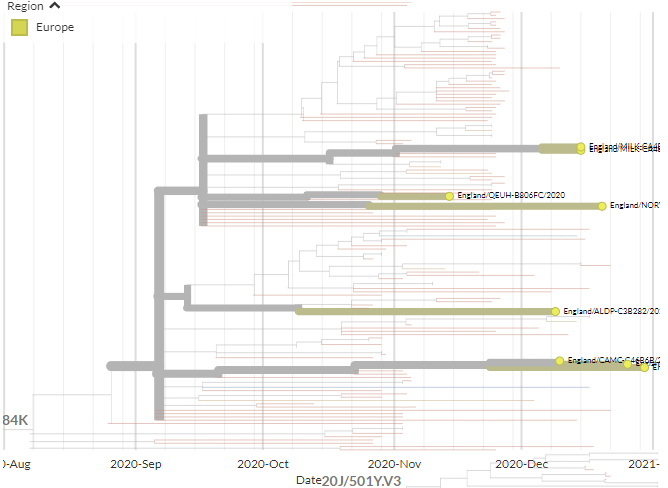

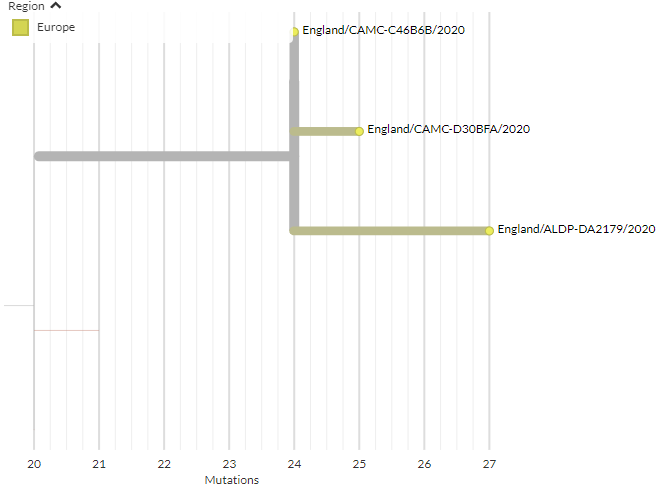
If we look at 20J/501Y.V3, we can see that sequences only are found in Brazil and Japan (known travel to Brazil), but no other countries.
9/10
nextstrain.org/groups/neherla…
9/10
nextstrain.org/groups/neherla…
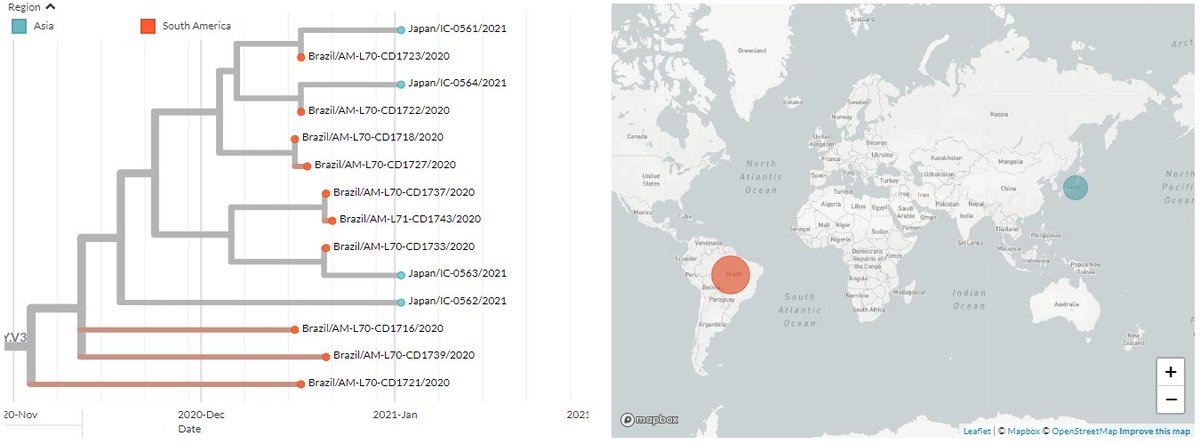
Hopefully, this thread helps distinguish what the '2 variants' are that are circulating in Brazil, and from which there have been samples detected in the UK.
And, I hope it shows how phylogenetics can help us 'tell viruses apart' & follow them as they move & change!
10/10
And, I hope it shows how phylogenetics can help us 'tell viruses apart' & follow them as they move & change!
10/10
To add: why are scientists concerned about these variants circulating primarily in Brazil?
@BillHanage write a fantastic thread here:
11/10
@BillHanage write a fantastic thread here:
11/10
https://twitter.com/BillHanage/status/1349943613514526723
• • •
Missing some Tweet in this thread? You can try to
force a refresh


